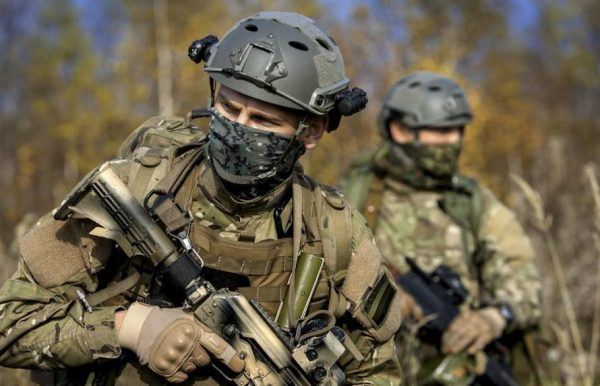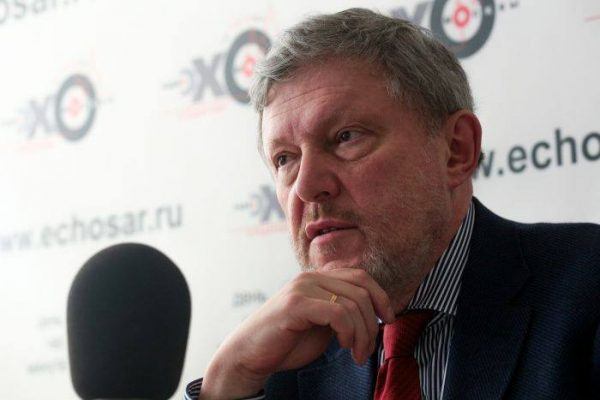Recent reports now confirm what has been speculated by the international media for nearly two weeks: the Syrian conflict is slowly becoming a battleground for old Cold War foes.
On 13 February, reports began to emerge on a clash between American-backed and pro-regime forces in Syria.
One of the first revelations of the battle was delivered by Reuters. The report stated that coalition and local coalition-backed forces repulsed a large overnight attack against a US-held base manned by American and Kurdish personnel on February 7 in the area of Deir al-Zor province.
Russia’s Defense Ministry acknowledged the incident, stating that pro-government militias had been carrying out reconnaissance and were subsequently targeted by rebel forces, but claimed no Russian servicemen had been in the area. However, journalists in contact with individuals on the ground reported that at least two Russian men fighting informally with pro-government forces were killed in the skirmish. These were followed later by reports procured by unnamed Russian and US officials that “scores” of contracted Russian fighters were killed, and the fighting may have resulted in as many as 100 Russian deaths.

The claim that those killed at Deir al-Zor included Russian fighters was later given more support after several of the injured from the battle were given treatment at military hospitals in Russia. Several wounded were reportedly brought to government defense facilities in Moscow and St. Petersburg, despite denials by officials of any involvement in the battle.
Economic and diplomatic considerations in Syria itself are what led Russia to lend its support to the Assad regime in the ongoing Civil War back in 2015. Russia’s goal is to secure those interests, not to look for a fight with the slew of other nations invested in the region.
On February 11, Russian forces reportedly clashed for a second time near Al Tabiyeh, marking the second defensive strike against pro-regime forces in less than a week. US officials told media sources that during the clash, an American military drone destroyed a Russian-made T-72 tank, killing the occupants. According to US military sources, the decision to deploy the drone against the tank was taken after it advanced to within firing range of US-backed troops while under artillery cover. Other outlets even claimed the advancing “pro-regime forces” began firing at American troops themselves, thus the neutralizing of the tank was in “self-defense.”

Despite the clear indications that Russian and American troops are now openly fighting in Syria, officials from both countries initially tried to play-down the significance of these clashes. Lieutenant General Jeffrey Harrigian, top US Air Force general in the Middle East, declined to comment when asked during a briefing with reporters on who was driving the destroyed tank. In a similar vein, Defense Secretary Jim Mattis responded to questions about Sunday’s clash, saying: “This could just be a local couple of guys doing something. I don’t want to dignify it as a big attack.”
The Russian government as well has refused to report on any Russian personnel casualties, leading to demands from public figures to disclose how many Russians had been killed in Syria and in what circumstances. Grigory Yavlinsky, a veteran liberal politician who is running for president in elections next month, released a statement through his Yabloko Party office stating: “If there was large-scale loss of life of Russian citizens, the relevant officials, including the commander-in-chief of our armed forces (Putin), are obliged to tell the country about it and decide who carries responsibility for this.”

(Credit: Facebook/Russian United Democratic Party Yabloko)
Weeks after the battles took place, Russia has finally conceded that Russian citizens did take part, but that government forces were not involved. In a statement released by the Foreign Ministry, Russia confirmed that “in the course of the recent military clash, in which the servicemen of the Russian Federation did not participate in any way and [military] technical means were not used, there are dead citizens of Russia and the [Russian Commonwealth] countries […] there are also several dozen wounded.”
Can we take the Foreign Ministry’s word that the country’s military was, in fact, not involved in the skirmishes earlier this month? That may be a valid question. But it is not necessarily an important one. What is important is that the official position of the Russian government is that their security forces did not actually clash with Americans or American-backed troops.
This is a good thing.
It signals that Russia is not looking for an excuse to butt heads with the United States in Syria. Indeed, this is not the first time that Russia has decided to defuse a potential clash with a stakeholder in the region. Earlier this month Russia expressed the same sentiment following an Israeli airstrike that wiped out half of Syria’s anti-aircraft capabilities. Rather than expressing anger that Israel attacked a country in which its personnel are stationed, the Russian response was one of concern that the attack would trigger any confrontation between the two countries. “We urge all sides to exercise restraint and to avoid any actions that could lead to an even greater complication of the situation” was the official (and only) comment from the Foreign Ministry in Moscow.
This echoed other reactions by Russia to previous Israeli intervention in Syria. Following an Israeli airstrike last March, for instance (an attack that nearly killed scores of Russian soldiers stationed near the target), Israeli Prime Minister Netanyahu reached out to Russia, reportedly receiving assurance from Putin himself that the two countries would increase coordination in regards to their respective interests in Syria.
All of this is in-sync with Russia’s priorities in Syria. Economic and diplomatic considerations in Syria itself are what led Russia to lend its support to the Assad regime in the ongoing Civil War back in 2015. Russia’s goal is to secure those interests, not to look for a fight with the slew of other nations invested in the region. This is what’s at the root of the Russian position when dealing with the US and their allies in Syria.
Luckily, a similar notion seems to be guiding the US, whose officials have been consistently skirting the issue of whether or not Russians were involved in the clash. Defense Secretary James Mattis, for instance, has been ambiguous since news of the battles came out. Only recently Mattis responded to reporters’ questions on the subject that he still needs more information to “understand and answer authoritatively.”
While the two countries may both may have opposing goals in the country and support different sides, neither are seeking open conflict. With any luck, the recent clashes will bring about a bit more coordination between the Russian Federation and the United States. Syria is already a regional battlefield for an assembly of actors, from the Kurds to Iran to Israel. The last thing anyone needs is for the country to become a faceoff arena between two superpowers.
















